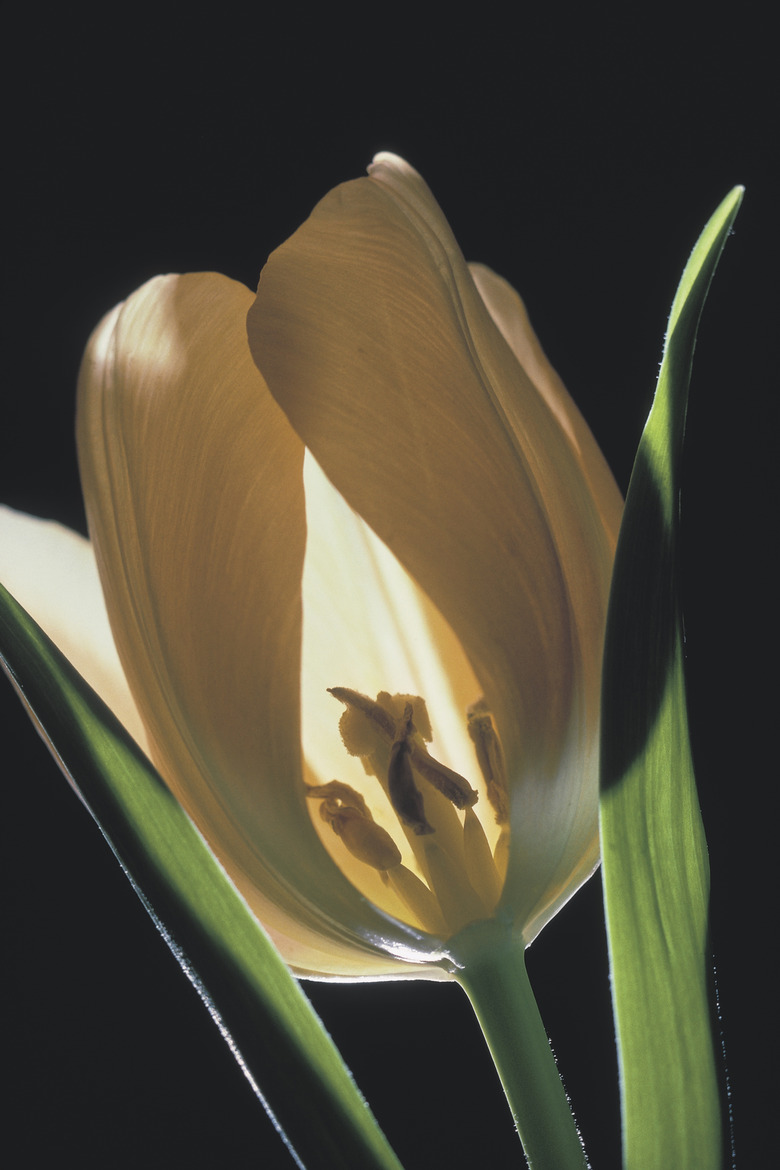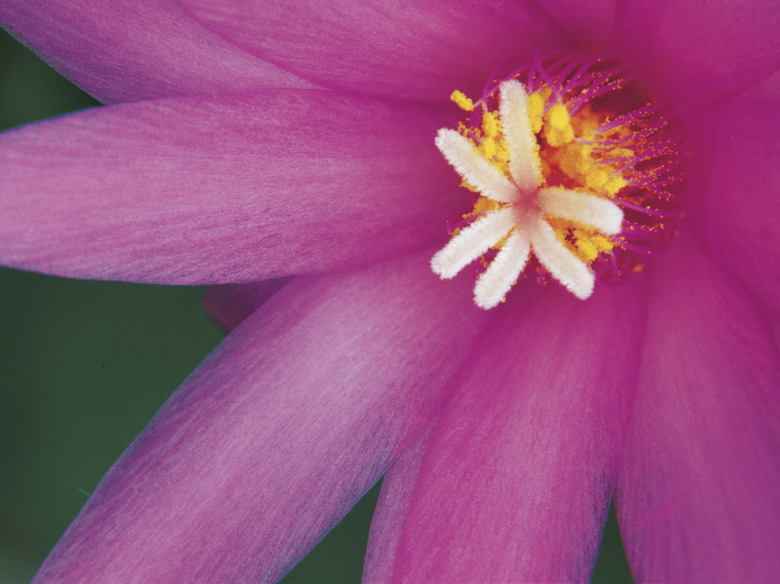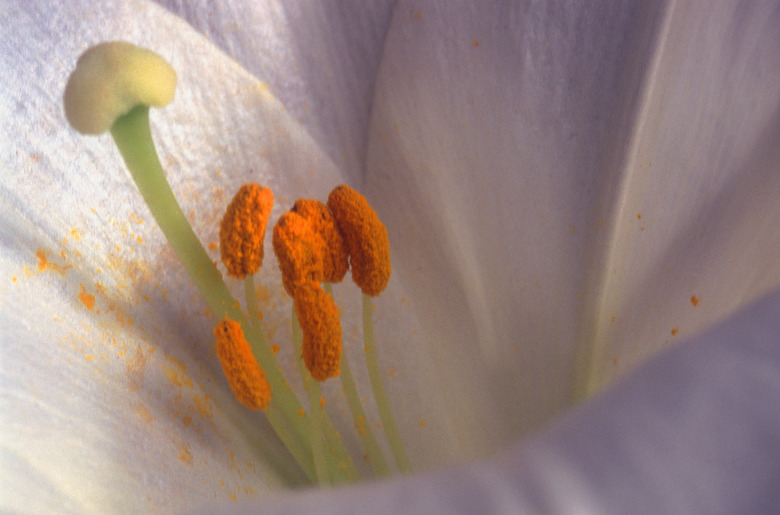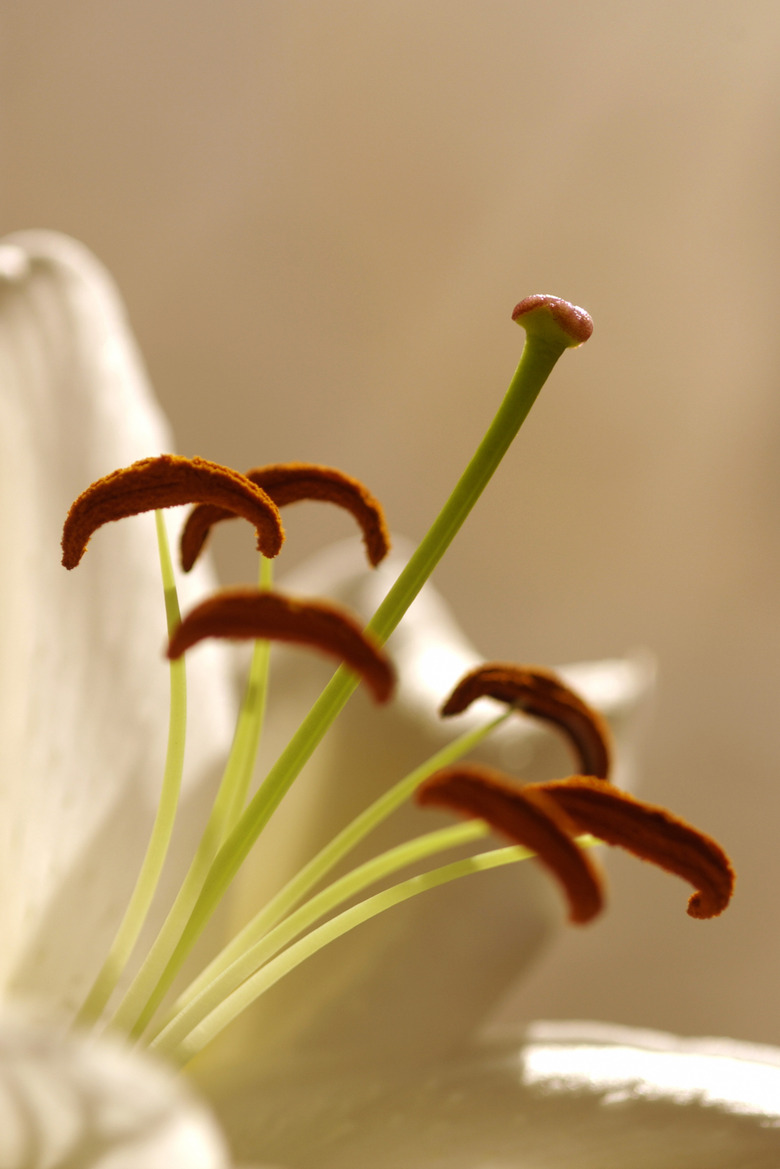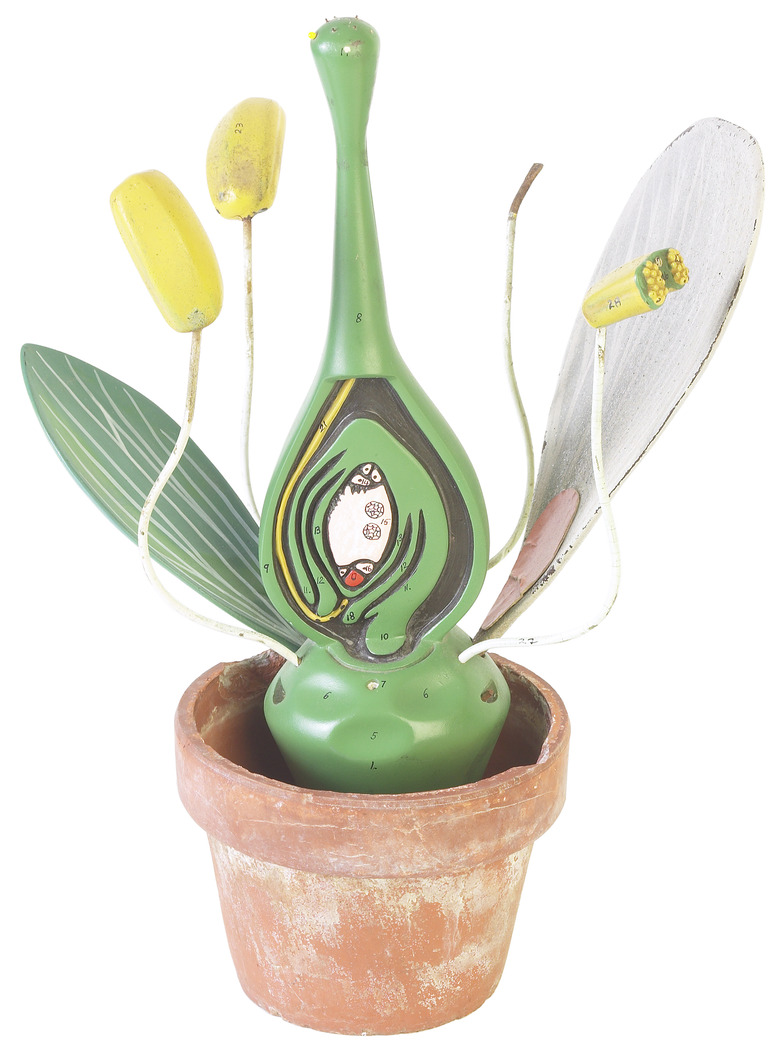How To Distinguish Between The Pistil & The Stamen Of A Plant
A plant's pistils and stamens can be found within its flowers, which are responsible for reproduction. Plants sexually reproduce, using stamens to provide sperm and pistils to provide eggs. Though some flowers contain both pistils and stamens, and so are hermaphroditic, many plants produce flowers that are either male or female. To get fruit and seeds, a gardener must have both male and female flowers available. Being able to recognize a hermaphroditic flower; a male, stamen-bearing flower; and a pistil-bearing female flower can guide a gardener's planting choices.
Step 1
Count the number of flower parts, starting from the petals and moving to the inside of the flower. These parts are always arranged in concentric circles or whorls, in the same order. Male and female flowers have two whorl groups, while hermaphrodites have three: a ring of petals, a ring of stamens, and a pistil or pistils at the very center.
- A plant's pistils and stamens can be found within its flowers, which are responsible for reproduction.
- Though some flowers contain both pistils and stamens, and so are hermaphroditic, many plants produce flowers that are either male or female.
Step 2
Look for stamens, which form the same way no matter the flower. Finding the stamens is easy in hermaphrodites, since they occupy the whorl between petals and pistil. If the flower has only two parts, determine stamens by appearance. Every stamen possesses a fine, sometimes threadlike filament that serves as a sort of stem with an anther at the top. The anther is a globular or rounded oval structure, sometimes lobed, where pollen is manufactured.
Step 3
Look for the pistil. Pistils show more variation in appearance than do stamens, but all contain an ovary at a widened base. This gives many pistils a shape like a corked wine bottle or bowling pin. Look for three pistil parts: the ovary at the bottom, the stigma at the top, and a style in between — connecting the ovary and stigma.
- Look for stamens, which form the same way no matter the flower.
- Finding the stamens is easy in hermaphrodites, since they occupy the whorl between petals and pistil.
Step 4
Cut the flower in half, if you still can't distinguish stamen from pistil. Bisect the flower vertically, starting at base of the flower. Look for the tell-tale swollen base of a pistil — the ovary — in the center-most flower whorl. If you don't find an ovary, you must be looking at stamens and the flower is a male.
Tip
Female flower parts are also properly known as carpals, which are often fused into one pistil. Many flowers feature this singular pistil at the center of the blossom, rather than separate carpals. Another way to describe a hermaphroditic flower is to call it androgynous. Such flowers are known as perfect flowers, since they contain everything needed to reproduce. Besides stamens, pistils and petals, flowers may possess a sepal — located between the stem and petals. Sepals look something like leaves and enclose a flower before it blooms. Complete flowers have all four flower parts.
References
- "Botany"; Taylor R. Alexander, et al.; 1970
- "Botany: A Functional Approach"; Walter H. Muller; 1969
- Master Gardener Botany Module; External Plant Parts: Flowers; Ann Marie VanDerZanden
